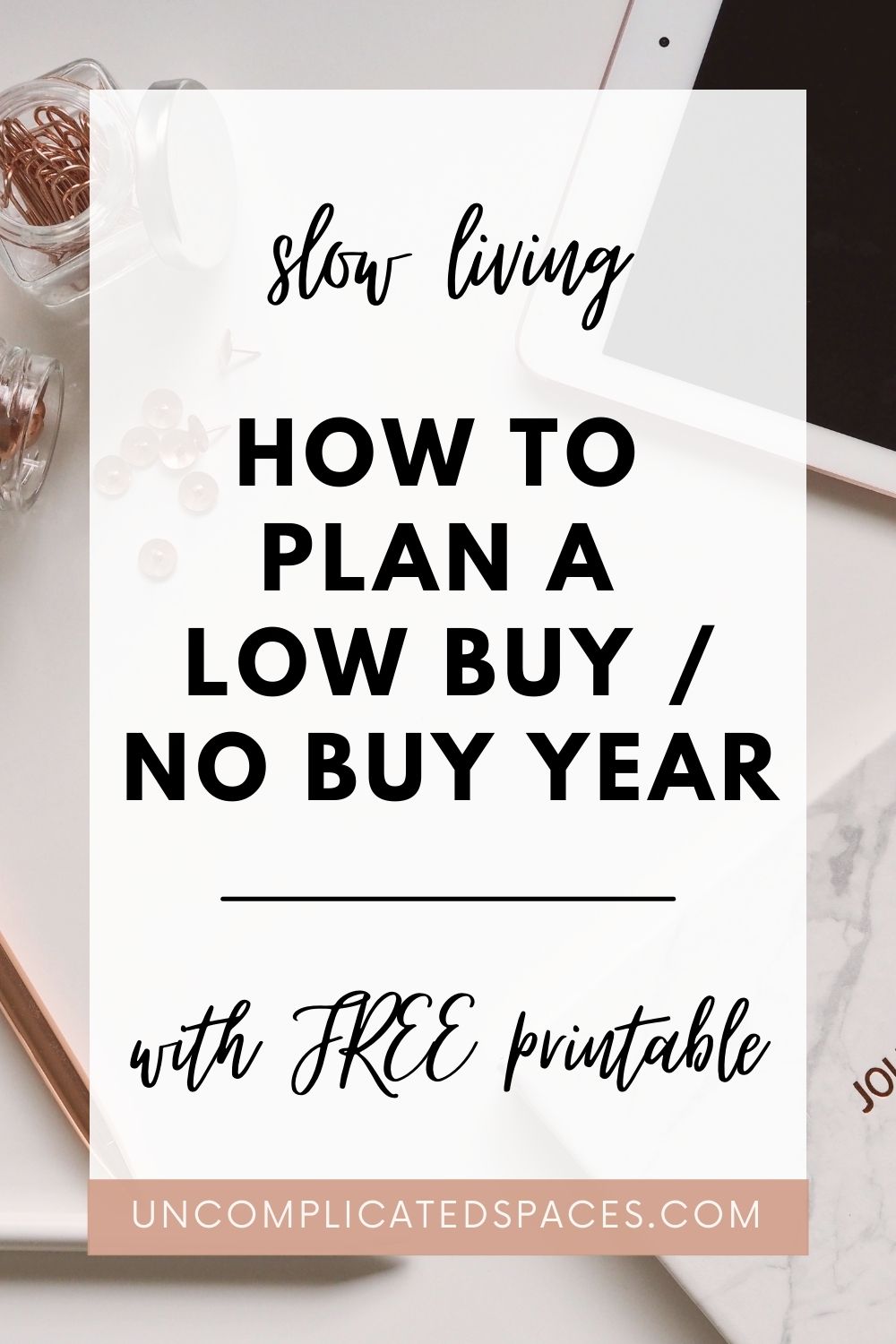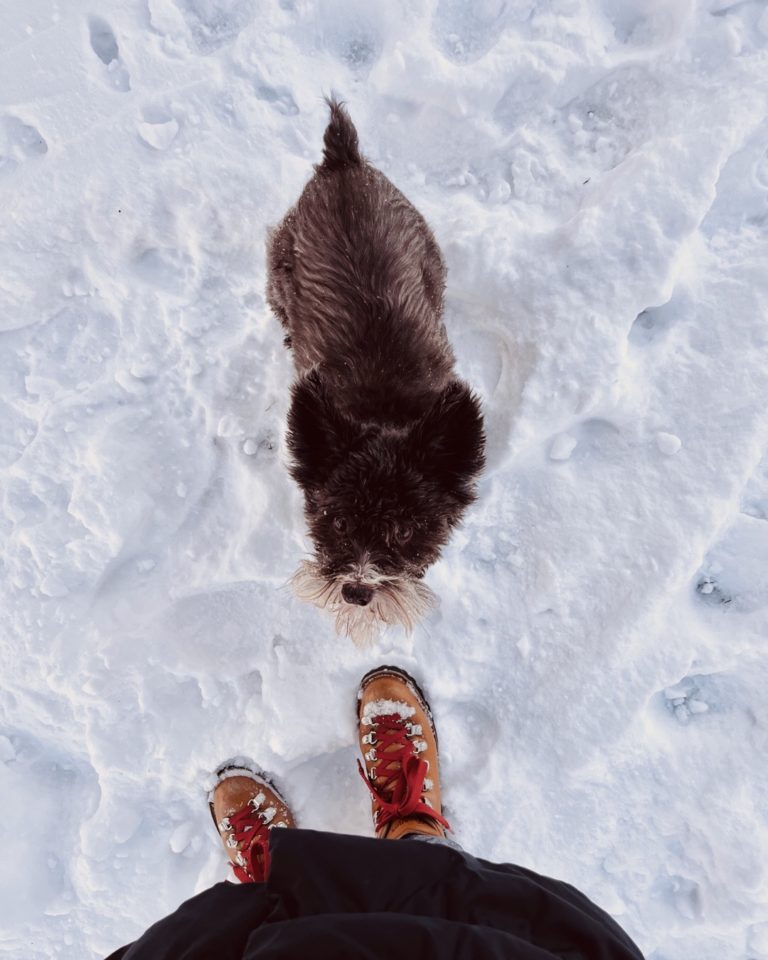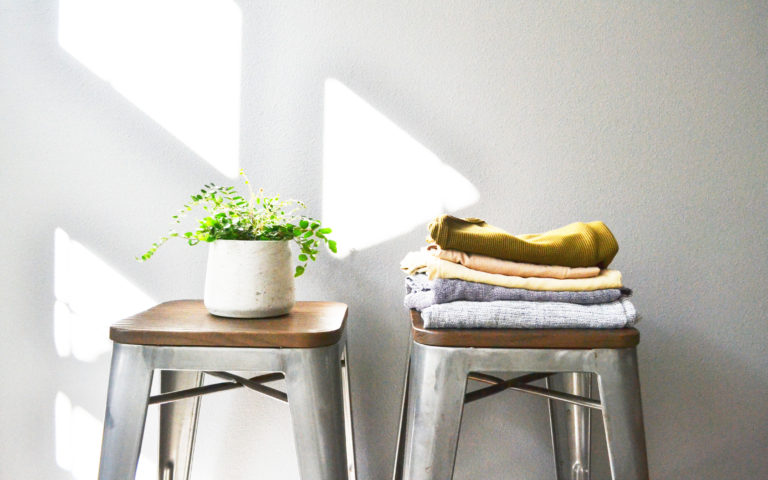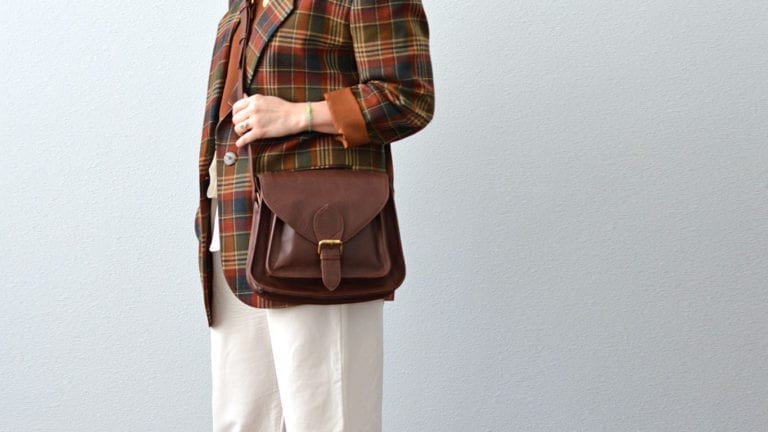I don’t do resolutions. When I’ve attempted them in the past, and inevitably failed at them, I’d always feel bad. So, a few years ago, I decided to stop setting myself up for failure. Instead, I like to take some time in December to think about intentions for the new year. “Intentions” feel much less restrictive than “resolutions” and they can be a great way to start living more intentionally. One of the intentions that I’ve set for myself for 2022 is to work towards a low buy year.
I think a “low buy year” is a great precursor to a “no buy year”. Or just a great way to reduce your consumption. With a low buy year, the idea is to purchase as few unnecessary items as possible but there are no restrictions on what you can buy. You can set certain rules for yourself such as “I will purchase X items of clothing” but the idea is to reduce your number of purchases. With a no buy year, you don’t purchase anything outside of your pre-approved items.
This isn’t my first attempt at a low buy year. This was also my intention for 2020, which I outlined here. And things went quite well until the pandemic hit. But, in the face of so many lifestyle changes, I let go of that intention pretty quickly. However, the pandemic also made me realize how much privilege I have, which means that I already have more than enough.
Also, taking a step back from Instagram has made me realize that I have more than enough clothing for my lifestyle. It’s also made me realize that I don’t need all of the clothing that I do own. And without the constant posting, I’ve had more time to think about what I want my life to look like. And it doesn’t involve more clothes or stuff. It’s the exact opposite actually.
I’ve been slowly decluttering my wardrobe and household items that we don’t need. I’d like to begin the new year with only the things that we use or find beautiful in our home. What I don’t want to do is replace the items that we’ve decluttered with more items that we don’t need. If we’re not mindful, it’s so easy to fill empty spaces with stuff, mainly because we’ve been conditioned to think this way.
But we can choose a different path.
Maybe you’re curious about a low buy/no buy year. If so, I’ve outlined a few steps to help you set one up for yourself. I’ve also included a FREE printable at the end to help you set up your low or no buy year. Enjoy!
Step 1: Identify your Reasons
WHY do you want to do a low buy/no buy year?
Identifying a reason/s for your low buy year will be one of the most important things that you do. These reasons will be the things that you refer back to when you’re feeling tempted to purchase something that you don’t need.
For example, I’ve identified 5 reasons why I want to do a low buy year:
- Improve my relationship with shopping / budgeting.
- Pay off debt.
- Sustainability / reduce consumption.
- Find contentment with what I own.
- Prove to myself that I can.
I think it’s important to focus on my 5th reason listed above. Taking on a challenge like this should be something that you do for yourself, not anyone else. I think that sometimes we can fall into the trap of wanting to impress other people or get people’s attention. If our over-consumption attempts haven’t worked, we might want to go against societal norms for that attention. We end up only replacing one attention seeking behavior with another!
Make it personal.
Step 2: Outline the Items You’re Allowed to Buy
This applies more to a no buy year. Thinking ahead of the things that you might need, make a list of allowed purchases. If you anticipate needing a new swimsuit for the summer, write it down.
This step can also be useful for a low buy year, with the caveat that you are allowed to purchase outside of this list if the need arises.
Even if you aren’t doing a low buy/no buy year, writing down a list of purchases for the year is a great way to be a more intentional consumer and reset consumerist behaviors.
Here is my personal list of items I anticipate, as an example.
- Replacements – toiletry items have to run out completely before repurchasing.
- Consumables (takeout coffee/food, dining out/alcohol, candles).
- Experiences (concert, movie or show)
- Material for sewing / sewing patterns.
- Knitting materials – I’m planning to have my mom teach me to knit when she visits.
- Gifts (to and from).
- Running shoes, if needed.
- A souvenir item from any trip that I take.
I am doing a low buy year, so I might make a few purchases outside this list (see step 4), which I will document in a monthly summary. If I were doing a no buy, these would be the only items that I would be allowed to purchase:
Step 3: Outline the Items You’re Not Allowed to Buy
Similar to step 2, list which items you are not allowed to purchase.
If I were doing a no buy, this would be my list:
- Local or online clothing purchases.
- Jewelry.
- Accessories.
- Makeup, hair and nail products that are not replacements.
- Housewares or furniture.
As a part of my low buy, I will still be minimizing purchases from these categories. The only one that I ever really struggle with is clothing and my recent attitude shift towards my wardrobe will hopefully be helpful here.
Step 4: Approved Purchases Outside your Rules
This can be a more specific extension of step 2 if you’re doing a no buy.
Or it can be a wish list that you keep to make a low buy more intentional, and hopefully, more successful.
Perhaps there are a few things that you’ve been eyeing or saving up for. Write each item down on a list with the item name, brand and price (I’ve included a space for this in the printable).
The following list are a few of the specific items that I’ve been considering as future purchases:
- Black long sleeve bodysuit – Boody $29.95. I may get this as a Christmas gift since it was an item on my wish list. If not, I’ll buy it as I have one tank bodysuit that I wear all the time. It would be nice to have a long sleeve version to wear in the winter and to give my other one a break because it’s starting to look worn.
- Dark Blue Jeans – Agolde 90s pinch waist $178. I only have light wash blue jeans which I will try to be satisfied with instead of buying a new pair. Could also attempt making a pair.
- White Jeans – Agolde 90s pinch waist $178. I have fabric cut for ecru persephone pants. If these turn out well, I will remove this purchase.
- One piece swimsuit – Organic Basics $120.
- Rashguard – look when summer is closer.
- Sun hat – just an idea right now.
** I will keep an eye out for all of these items in the secondhand market to purchase first. These are all backups in case I decide I want one of them and am unable to find it.
If you’re considering a low buy/no buy year, or simply want to be a more intentional consumer, I hope you found this post helpful.
Please use the FREE LOW BUY/NO BUY PLANNER below to help you with your challenge:
Are you planning to do a low buy/no buy year in 2022?






Pingback: I Don’t Makes Resolutions – What I do Instead - Uncomplicated Spaces
Pingback: Why I’m Not Doing a No-Buy Year in 2022 & What I’m Doing Instead - Mother Lode Mama
Last year I decided to keep an excel spreadsheet of every clothing and shoe purchase I made. I am at 114 items as of last week. Every purchase was initially in red and when I wore the item I changed it to black. If it was bought resale and I gave it away it got a strikethrough, if I returned it I allowed myself to just delete it. I have 16 items I still haven’t worn 🙁 One of the biggest lessons I learned was not to buy items out of season and to stay away from sales unless it was an item I already had on a wishlist. Even having a wishlist was really instructive, items rotated on and off it constantly. I just take it month by month and I am really energized to be even more intentional next year! We can do this!